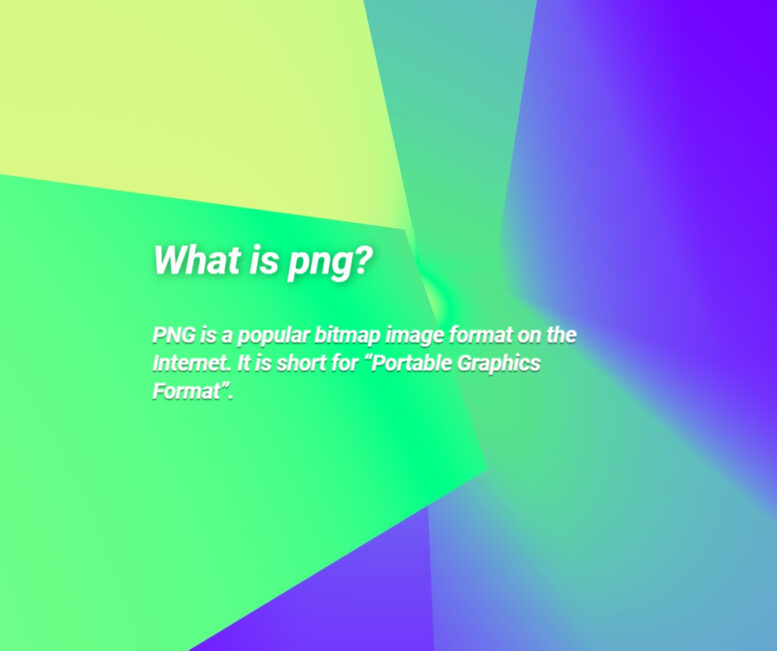PNG stands for portable network graphic, which is a category of image formats. It frequently assists in creative projects, like web design or projects involving Photoshop or comparable software.
PNG image file format enables an object’s image to be positioned into software like photoshop, etc with a clear or transparent background, making it extremely beneficial while designing a graphic from numerous layers, as in the case of branding and logo design.
As PNG’s are high-quality image files, accordingly it tends to acquire more storage space than alternative image file formats. If storage is an issue, you may want to restrict the volume of PNG usage.
In technical terms, PNGs seize more storage space because this file format offers tremendous detailing of the image and supports Greyscale, as well as both the 24-bit RGB and 32-bit RGBA color spaces.
When it comes to the Copyright issue, PNG’s tend to be more accessible than alternative formats. They acquire the structure of an accessible format that can be more widely utilized without retaining a license. – which is an additional benefit of using PNG formats.
The features of the PNG file format.
The PNG form composes these characteristics :
- PNG’s transparency is not limited to a single color. ‘Opacity’ – the degree of transparency can even be regulated in this file format.
- PNG supports the interlacing of images, which takes less time than GIF format.
- PNG’s have Gamma corrections that enable images to tune brightness according to specific display manufacturers’ requirements.
- PNG allows images to be saved in their original color as well as in the palette and grayscale formats provided by the GIF.
What are the benefits of PNG?
The usefulness of the PNG format include:
Lossless compression — visual details and quality remain the same after compression.
Supports a variety of colors — the format is acceptable for various categories of digital images, such as photographs and graphics.
Supports transparency — digital images can be compressed with transparent areas.
Ideal for image editing – the lossless compressions feature makes PNG’s perfect for storing and editing digital images.
Pointed edges and solid colors — prove to be excellent for images containing texts, graphics, and line arts.
The disadvantages of the PNG format include:
Larger file in size — compresses digital images at bigger file size.
Faulty for professional-quality print graphics — non-RGB color spaces like CMYK (cyan, magenta, yellow and black) are not supported.
Doesn’t support embedding EXIF metadata, which is employed by maximum digital cameras.
Does not officially support animations, but there are unofficial extensions present that accomplish the task.

